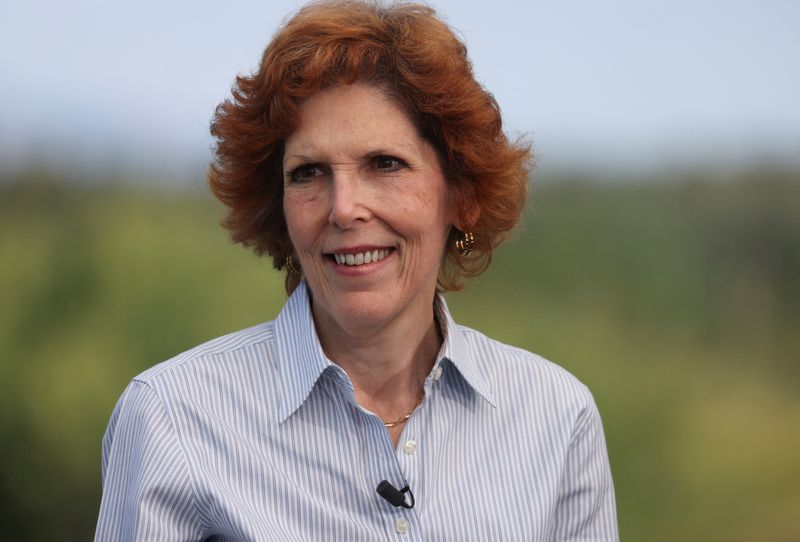By Michael S. Derby
NEW YORK (Reuters) - The Cleveland Federal Reserve said on Wednesday it has begun to search for a replacement for its current president, Loretta Mester, a veteran central banker who has led the regional bank since 2014.
Mester is scheduled to retire on June 30, 2024 due to Fed rules that limit officials' service based on age and length of service. Over her tenure, she has been one of the U.S. central bank's more hawkish voices and has at times favored a tighter monetary policy stance than her colleagues.
The search process will be overseen by members of the Cleveland Fed's Board of Directors who do not come from firms the central bank regulates.
The process will be led by Heidi Gartland, the chief government and community relations officer with University Hospitals and the deputy chair of the Cleveland Fed's board. The U.S. central bank must approve the Cleveland Fed's choice.
The 12 regional Fed banks are quasi-private institutions that are technically owned by local banks, although they operate under the control of the Fed's Board of Governors in Washington. Their respective boards are drawn from the private sector.
In a press release announcing the start of the search, Gartland said, "Mester's strong leadership over the past decade has positioned the Cleveland Fed as an important resource to the community and the nation."
Gartland added that "thanks in no small part to her intellect, energy, and dedication to public service, the Cleveland Fed today is known around the globe for its top-quality economic research, financial institution supervision, community development outreach, and delivery of financial services."
LEADERSHIP FLUX
Searches for regional Fed banks have become contentious in recent years due to the opacity of the process. Whereas Fed officials in Washington are selected by the U.S. president and confirmed by the Senate in a public process, regional Fed leaders are chosen behind closed doors and the public rarely knows who is in contention for a position that helps set the nation's monetary policy and regulates local financial institutions.
In the last few years, regional Fed leadership has been in flux. Two officials left early in September 2021 amid questions about their investment activities, while the Kansas City Fed dealt with an extended search for new leadership even as its own former leader, Esther George, had faced mandatory retirement. Also, the St. Louis Fed is still searching for a new boss after its former chief, James Bullard, abruptly quit over the summer to take a position leading Purdue University's business school.
Fed banks have also been under increased pressure in recent years to diversify their leadership away from the white males drawn from business or finance who have typically dominated those positions. And to that end, a number of regional Fed banks have flagged diversity as a key consideration in their respective search processes.
Mester will exit the Fed after spending most of her professional life within the central bank. Before coming to the Cleveland Fed, Mester led the research department of the Philadelphia Fed.

Mester, according to data from Wrightson ICAP (LON:NXGN), dissented in 8% of her Federal Open Market Committee votes in favor of a tighter policy stance than preferred by other policymakers. Mester notably voted against parts of the Fed's initial response to the coronavirus pandemic in March 2020.
Regional Fed leaders must retire when they hit 65. If they join the central bank after the age of 55, they can be allowed to serve for 10 years, or until 75, whichever comes first. According to Brookings Institution data, the next regional Fed official who must exit due to age is Philadelphia Fed President Patrick Harker in June 2025.